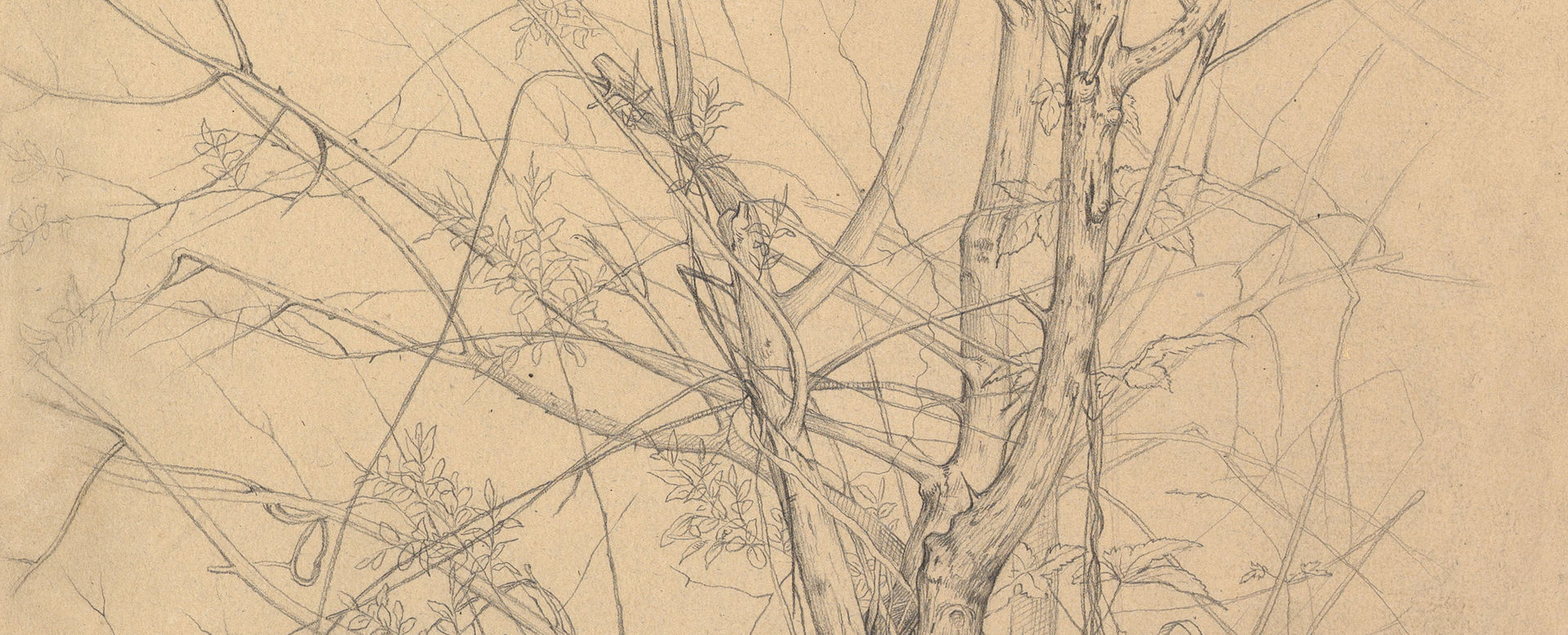Lazarus
Jan van der Straet, called Stradanus Netherlandish
Not on view
Late in his career, Stradanus produced a series of drawings of bust- and half-length biblical figures, each appearing before a parapet and within an oval frame.[1] In 1613, eight years after the artist’s death, nineteen of these sheets served as designs for a set of engravings entitled "Icones Prophetarum Veteris Testamenti" (Images of Old Testament Prophets), cut by Cornelis Galle I and published by Theodoor Galle, both sons of Philips Galle, with whom Stradanus had worked for decades. Twenty-three years later, Theodoor’s son Johannes reissued the series with seven additional engravings after Stradanus’s designs.[2] Based on the other surviving and recorded drawings, including the present sheet, it seems that a parallel series of New Testament figures had been planned, though only two (Saint Joseph and Saint James the Greater) were engraved; these were published not by the Galles but by Justus Sadeler, a member of another Netherlandish printmaking dynasty.[3]
The Museum’s drawing portrays Lazarus of Bethany. In the Gospel of John, Christ restores Lazarus to life four days after the man’s burial, an episode of major importance in the Bible, both as a miracle in its own right and as an anticipation of Christ’s resurrection. Here, within the limited confines of the half-length, oval format, Stradanus presents Lazarus as if just brought back to life; the wizened figure, draped in his shroud, directs his expressive eyes and hands upward, seemingly reaching gratefully toward Christ from the grave.
(JSS, 7/5/18)
[1] Karel G. Boon, The Netherlandish and German Drawings of the XVth and XVIth Centuries of the Frits Lugt Collection (Paris: Institut néerlandais, 1992), vol. 1, pp. 355-56; Alessandra Baroni Vannucci, Jan van der Straet detto Giovanni Stradano, flandrus pictor et inventor (Milan: Jandi Sapi Editori, 1997), pp. 328-31, nos. 648-665. For a more recent account of the whereabouts of the drawings, see Stefaan Hautekeete, ed., From Floris to Rubens: Master Drawings from a Belgian Private Collection (Brussels: The Royal Museums of Fine Arts of Belgium, 2016), pp. 11-12, which publishes two drawings now in a private collection in Belgium and (p. 112, notes 6-10) mentions drawings in the National Gallery in Canada, the Morgan Library & Museum, New York, and a private collection in Toronto, as well as one that appeared at Christie's Amsterdam on November 5, 2003 (lot 1). Additionally, of the other drawings published by Baroni Vannucci with unknown whereabouts, one (no. 650) was sold at Sotheby's New York, January 26, 2005 (lot 78); another (no. 655) appeared at a sale at Bonhams Knightbridge on April 23, 2008 (lot 233); a third (discussed by Baroni Vannucci under no. 656) appeared in the posthumous sale of I.Q. van Regteren Altena at Christie’s Amsterdam on December 10, 2014 (lot 98) and was, more recently, in 2017, sold to a private collector by Stephen Ongpin Fine Art; a fourth (no. 662) is, as of June 2018, on the art market.
[2] For the entire series, see Marjolijn Leesberg and Huigen Leeflang, Johannes Stradanus (New Hollstein Dutch & Flemish Etchings, Engravings and Woodcuts 1450- 1700) (Ouderkerk aan den Ijssel: Sound & Vision Publishers, in co-operation with the Rijksprentenkabinet, Rijksmuseum, Amsterdam, 2008), part I, pp. xl, 10-23, nos. 4-30.
[3] Marjolijn Leesberg and Huigen Leeflang, Johannes Stradanus (New Hollstein Dutch & Flemish Etchings, Engravings and Woodcuts 1450-1700) (Ouderkerk aan den Ijssel: Sound & Vision Publishers, in co-operation with the Rijksprentenkabinet, Rijksmuseum, Amsterdam, 2008), part I, pp. xl, and part 2, pp. 192-95, nos. 244-45. It is not clear when, in relation to the Galle engravings, these two prints were published. The drawing for Saint James the Greater is in the Art Institute of Chicago; the drawing for Saint Joseph is not known, though Boon 1992, p. 355, note 9, proposed that the drawing for the engraving of Amos in the Old Testament series (Sotheby's New York, January 26, 2005, lot 78) might originally have been intended as the New Testament figure Joseph in light of the halo and attribute that appear in the drawing.
This image cannot be enlarged, viewed at full screen, or downloaded.




